Architecture and history of the Golden Chapel in Recife
The Golden Chapel, located in the historic centre of Recife, is one of the most impressive examples of the Brazilian Baroque.
Built between 1696 and 1724 by the Venerable Third Order of St Francis, it stands out for its richly ornamented interior with cedar carvings covered in 22-carat gold leaf, reflecting the economic heyday of Pernambuco during the colonial period.

Features of the Golden Chapel
In addition to the sculptures and paintings that decorate its walls and ceiling, the chapel houses works of sacred art of great historical value, such as side-altars dedicated to Franciscan saints and panels depicting Christian virtues.
Part of the Convent and Church of Santo Antônio complex, the Capela Dourada is a testament to the faith and artistic opulence of colonial Brazil and is considered one of the finest examples of national religious art.
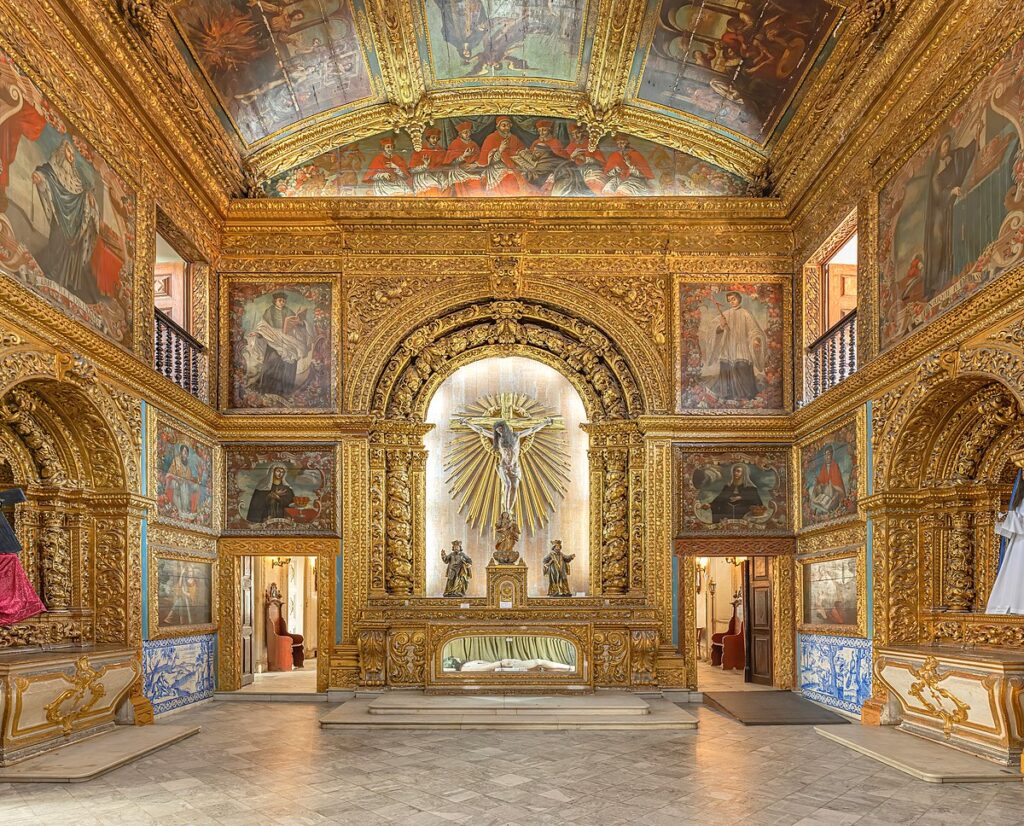
Video “Architecture and history of the Golden Chapel
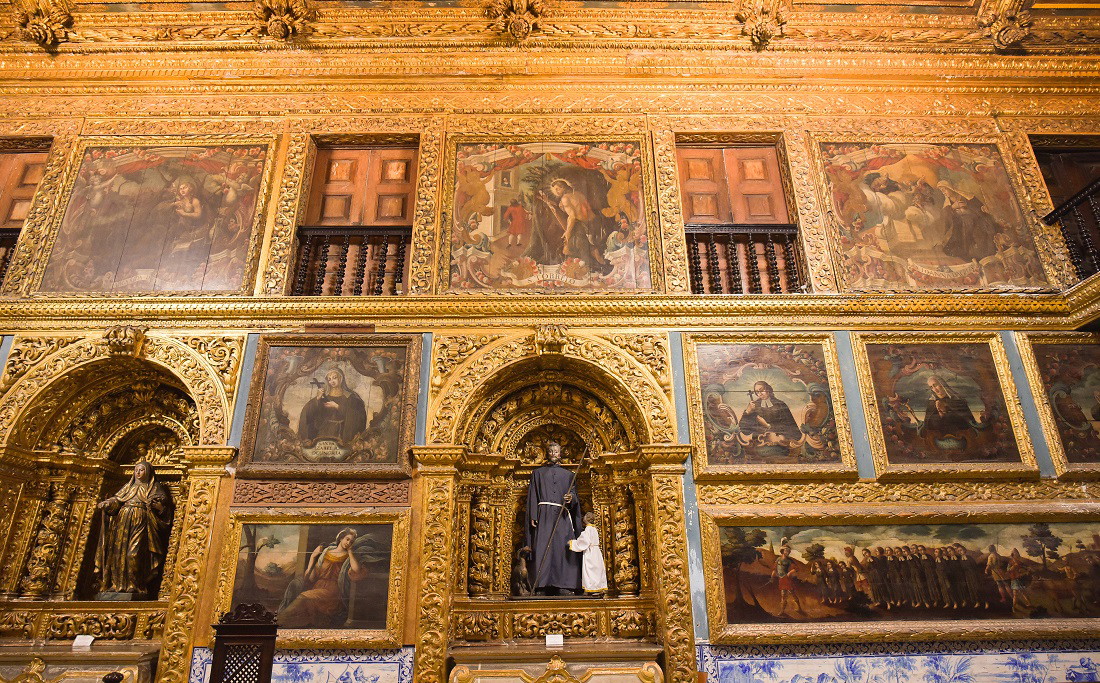
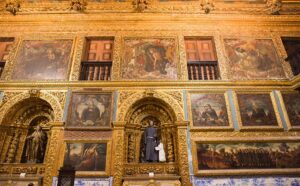
Detalhes e as curiosidades da Capela Dourada de Recife
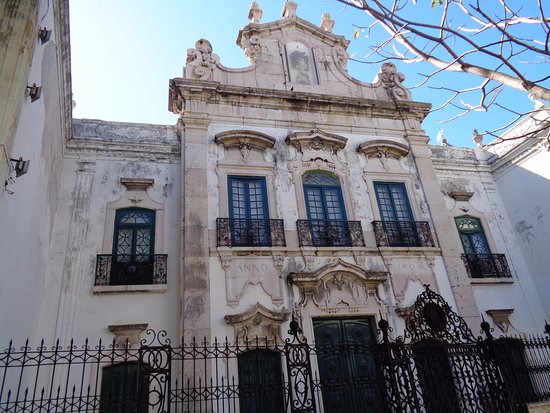
História e Arquitetura da Capela Dourada em Recife PE
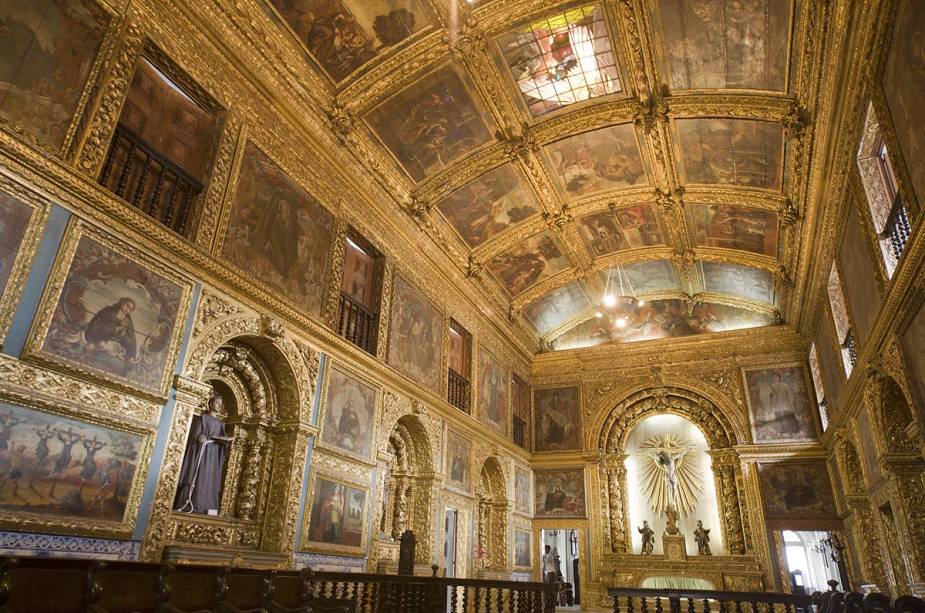
Igreja Dourada - Reportagem Arte, Arquitetura e História05:19
Historical context
During the colonial period, Pernambuco was one of the most important economic centres of Brazil, mainly due to sugar production.
The presence of mill owners and the wealth derived from sugarcane cultivation contributed to the formation of a society characterised by great social inequalities.
In this context, religious brotherhoods such as the Venerable Third Order of Saint Francis played an important role, acting not only as spiritual support groups but also as social organisations that promoted charity and assistance to those in need.
The Golden Chapel built by this brotherhood reflects the opulence and faith of the period.
Details of the Franciscan Order
The Third Order of St Francis, founded in the 13th century by St Francis of Assisi, is one of the various branches of the Franciscan Order.
This brotherhood was specifically created for those who wished to live the teachings of St Francis without becoming monks.
In Recife, the order was formally organised in the 16th century and quickly became one of the most influential, bringing together members from different social classes, mainly merchants and landowners.
The Order’s main mission was to promote spirituality and charity, and its activities included the building of churches and chapels, as well as social action to benefit the community.
The Golden Chapel is an outstanding example of the artistic work and devotion of the Franciscan friars, reflecting the cultural and religious richness of the period.
1. History and Architecture
The Golden Chapel, or Chapel of the Third Order of St Francis of Recife, is part of the Sacred Recife.
It belongs to the Venerable Third Order of São Francisco do Recife and its foundation stone was laid on May 13th 1696 by Captain General Caetano de Melo Castro.
The (Portuguese) master mason Captain Antonio Fernandes de Matos was in charge of its construction, and such was the fervour with which the work was carried out that with only the jewels (given as alms) of the Board of Directors and the alms of the Third Brotherhood, it was possible to open it to the public, it was opened to the public on 15 September 1697, the sum of 1,365$010 (one thousand three hundred and sixty-five contos and ten réis) having been spent on its construction up to that date.
“On the 15th of September 1697, sixteen months after it was begun, it was inaugurated with all solemnity by the Most Reverend Father, Visiting Commissioner, Friar Jerônimo da Ressurreição, who then celebrated the Holy Sacrifice of the Mass at the high altar”.
It was completely finished by 1724, when work on the church was carried out without interruption. Thus, little by little, new work was undertaken each year, and only after 1724 can we consider all the work on the church to have been completed.
The chapel is entirely carved in wood (cedar) in the Baroque style, covered with plaster and gold leaf.
The Chapel of the Venerable Third Order of St. Francis of Recife, monumental for its gold, is an affirmation of the Baroque, born out of that agitated artistic end of the 17th century of Louis XV in France and King John V in Portugal, precisely with the financial heyday of Pernambuco: Plantation owners, the wealthy, noblemen, rich men, very rich brotherhoods, these were the days of turned furniture, carved jacaranda, carved cedar and later gilding. The Baroque, rich in gold, can be seen in the stunning decoration that preceded it.
The high altar, the chapels and the side altars are monuments of carved wood. Everything was opulence, everything was grandeur. The Capela Dourada reflects this opulent atmosphere.



2. Paintings inside
The paintings in the Golden Chapel of the Third Order of St Francis in Recife are incredibly rich, undoubtedly one of the last and most vibrant expressions of religious art in Pernambuco.
The canvases and their very rich panels, fighting against the surprise of the years and the neglect of man, still testify today to the glorious revelation of the artists of the past. Unfortunately, we don’t know the names of the authors of these works.

3. Interior panelling
“Two long panels on the side walls show the Franciscan Martyrs. The missionary friars travelled throughout Europe and other continents. One day, five friars passed through Coimbra on their way to Morocco in Africa, where they wanted to take the Gospel to the Muslims.
When they arrived in Morocco, they preached to the pagans, but were arrested by the king and condemned to death by beheading, which took place on 16 January 1220.
The remains of the martyrs were transported to Europe and, passing through Coimbra, were placed in the church of the Convent of Santa Cruz. (Extract from the book “Francisco mostrar o caminho”, p. 38 by Br. Hugo Baggio, OFM). These two altarpieces were made between 1707 and 1710.
The gilding of the panels was completed between 1699 and 1700 for some and 1715 to 1717 for others.


4. The tiles
The tile panels that decorate the Golden Chapel, all more or less similar to those found in various Franciscan churches in Brazil, were purchased in 1704. They are simple figures with secular motifs.

5. Carvings
The carved wood in our churches is a living testimony to the art and civilisation of past generations.
It is a difficult study; we know very few technicians in this speciality, although every day we see a multitude of connoisseurs and experts.

6. Railing of the Great Arch
Between the Golden Chapel and the church of the Convent of Santo Antônio do Recife, there is a huge iron railing. It wasn’t always like this; the original railing was completely carved, made in 1968 by the Franciscan brother Luiz Machado.

7. The images
All the pictures in the Golden Chapel come from Portugal, except for Our Lady, Patroness of the Novices, which was carved in wood (cedar) in 1866-67 by the Pernambuco master carver Manuel da Silva Amorim, the same man who made the image of Senhor Bom Jesus dos Passos in 1846, which is carried in procession every year during Lent. The images of São Cosme and São Damião were brought from Lisbon, Portugal, in 1742.

The Golden Chapel, listed since 30 November 1937 by the National Institute of Historical and Geographical Artistic Heritage (IPHAN), is now a National Monument. Weddings and other liturgical ceremonies have not taken place there for many years, and it is now considered a museum.
Tourists from various countries and all Brazilian states visit the Golden Chapel every day, and students from various colleges and universities attend classes given by professors of, for example, Architecture and Baroque Art. The average annual number of visitors is twenty thousand.

Tourist Guide to Pernambuco, Recife, Bahia, Salvador and the Northeast
Architecture and history of the Golden Chapel in Recife
Publicações Relacionadas
Pernambuco: A Guide to Its Unique Attractions
Pernambuco's best beaches and their attractions
Explore the Enchanting Waterfalls of the Mata Sul Region PE
The Stage of the Passion of Christ in New Jerusalem: A Guide
Rural Tourism Route in Pernambuco
The oldest churches in Pernambuco and the first church in Brazil
Interior of Pernambuco: Nature, Wine, and Tradition
This post is also on:
![]() Português
Português ![]() English
English ![]() Deutsch
Deutsch ![]() Español
Español ![]() Français
Français



















